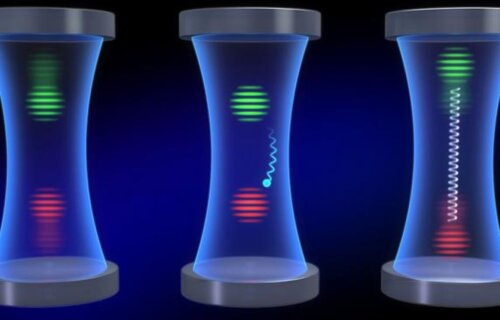
To better understand the ocean’s overall health, researchers hope to harness some of evolution’s simplest creatures as tools to assess aquatic ecosystems. All they need is $20 worth of materials, a 3D-printer, and some jellyfish hats.
Jellyfish first began bobbing through Earth’s ancient oceans at least half a billion years ago, making them some of the planet’s oldest creatures. In all that time, however, their biology has remained pretty consistent—a bell-shaped, brainless head attached to a mass of tentacles, all of which is composed of around 95 percent water. Unfortunately, that same steady state can’t be said of their habitat, thanks to humanity’s ongoing environmental impacts.
Although it’s notoriously dangerous, technologically challenging, and expensive for humans to reach the ocean’s deepest regions, jellyfish do it all the time. Knowing this, a team of Caltech researchers, led by aeronautics and mechanical engineering professor John Dabiri, first created a jellyfish-inspired robot to explore the abyss. While the bot’s natural source material is Earth’s most energy efficient swimmer, the mechanical imitation couldn’t quite match the real thing. Dabiri and colleagues soon realized another option: bringing the robotics to actual jellyfish.
“Since they don’t have a brain or the ability to sense pain, we’ve been able to collaborate with bioethicists to develop this biohybrid robotic application in a way that’s ethically principled,” Dabiri said in a recent profile.
First up was a pacemaker-like implant capable of controlling the animal’s speed. Given its efficiency, a jellyfish with the implant could swim three times as fast as normal while only requiring double the energy. After some additional tinkering, the team then designed a “forebody” that also harmlessly attaches to a jelly’s bell.
This 3D-printed, hat-like addition not only houses electronics and sensors, but makes its wearer even faster. Its sleek shape is “much like the pointed end of an arrow,” described Simon Anuszczyk, the Caltech graduate student and study lead author who came up with the forebody design. In a specially built, three-story vertical aquarium, the cyborg hat-sporting jellyfish could swim 4.5 times faster than its regular counterparts.
[Related: Even without brains, jellyfish learn from their mistakes.]
By controlling their jellies’ vertical ascent and descent, Dabiri’s team believes the biohybrids could one day help gather deep ocean data previously obtainable only by using extremely costly research vessels and equipment. Although handlers can only control the up-and-down movement of their cyborg animals at the moment, researchers believe additional work could make them fully steerable in any direction. They’ll also need to develop a sensor array capable of withstanding the deep sea’s crushing pressures, but the team is confident they are up to the challenge.
“It’s well known that the ocean is critical for determining our present and future climate on land, and yet, we still know surprisingly little about the ocean, especially away from the surface,” Dabiri said. “Our goal is to finally move that needle by taking an unconventional approach inspired by one of the few animals that already successfully explores the entire ocean.”










